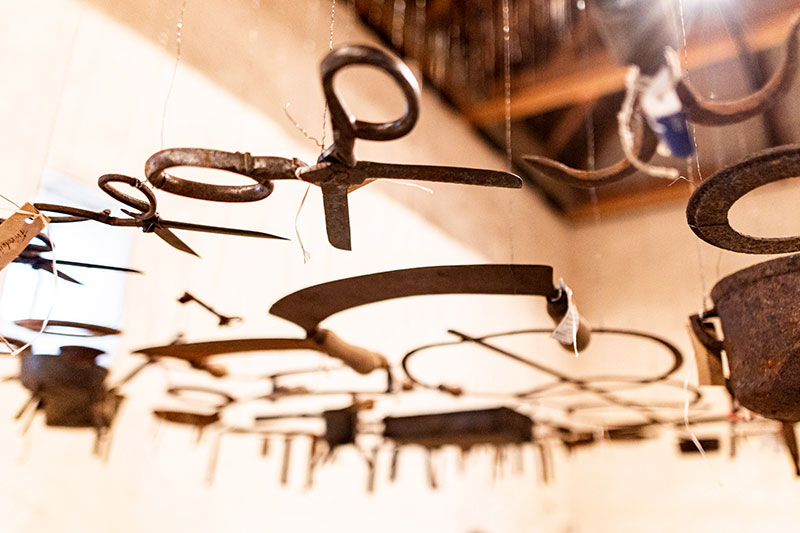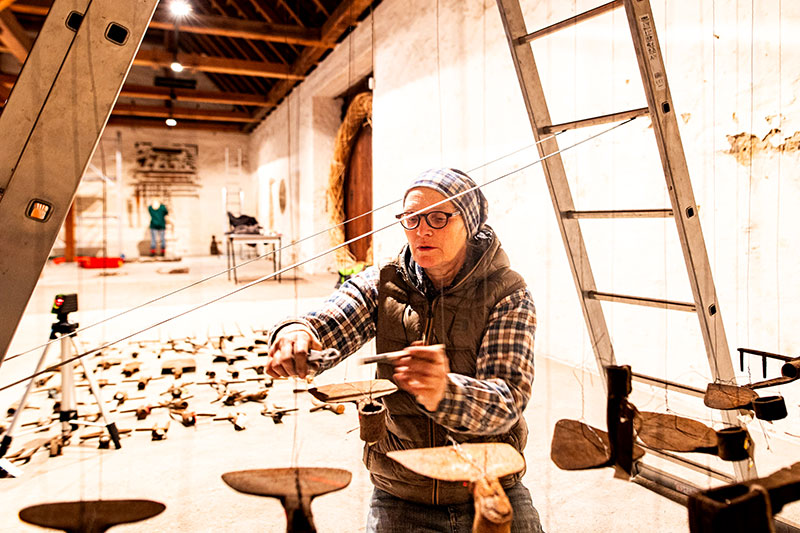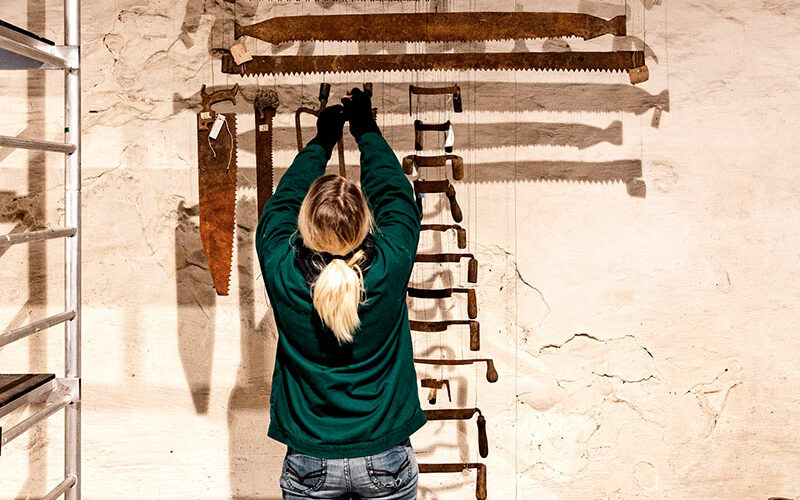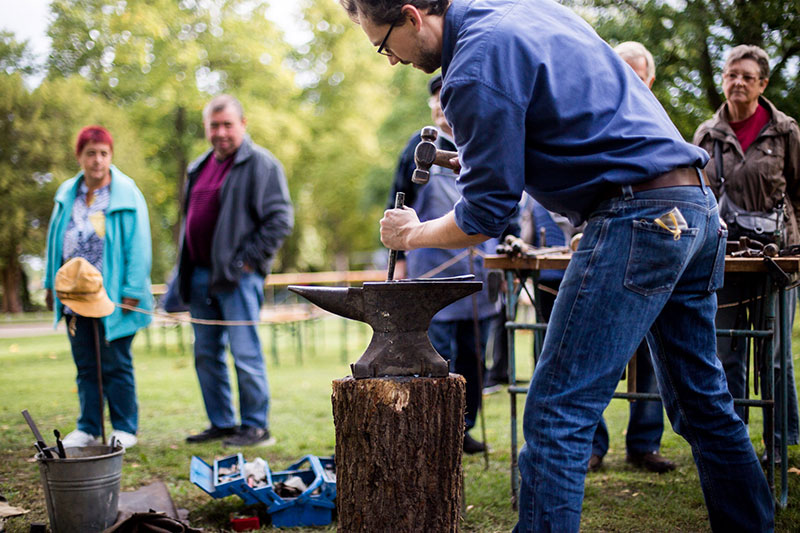Saturday, December 2

Iron exhibition - exhibition towers - brass music - fire
The castle remains closed! For once, the last day of the program before the Oderbruch Museum Altranft goes into hibernation from 10 December to 2 March will not take place in Altranft Castle. Instead, the focus will be on the newly created and historically rich iron tools exhibition at the Berg Schmidt Hof on Alte Heerstraße.
The iron collection
This new exhibition is thanks to Manuel Rößler's collection of more than 3000 individual items, which was purchased by the Oderbruchmuseum two years ago on the initiative of our collection manager at the time. All the objects come from Saxony, Thuringia and Brandenburg, in particular from the Oderbruch region. Finding sites included village rubbish dumps and "bulky waste days", but also intact farmsteads in the villages in the Lusatian lignite mining areas that had been cleared for excavation (in-situ mining). The collection was compiled between 1980 and 2020. During this time, profound upheavals in the culture of objects took place - particularly promoted by the political "turnaround" in the GDR - up to the complete replacement/disposal of everyday objects, so that such a collection can never be brought together again.
Manuel Rößler brought years of experience in the recognition and historical classification of such objects. He worked at the Institut für Museumswesen Berlin from 1983-1989 and was co-owner of the company Historische Bauwerkstücke Bernau from 1990-2021. The proportion of objects from the Oderbruch region (estimated at 30 %, i.e. around 1000 individual items) not only represents an important addition to the Oderbruch Museum's collection, but far exceeds it in terms of both the number and the significance of the individual items. The provenance of these objects is reliably documented.
Objects from the Oderbruch region were used almost exclusively for the exhibition. In the fieldstone barn of the Berg-Schmidt-Hof (there is also one made of brick), the museum's curator, Antje Scholz, spent weeks creating "webs of iron". At least that's what program director Kenneth Anders calls the exhibition in conversation, alluding to the effort, form and scope, which can be easily compared to the well-known "Oderbruchgespinst" in the castle, a relief-like map made of yarn and 16,000 knots.



In the barn on the historic farm, however, hundreds of iron tools seem to float weightlessly above the floor. Suspended by wire from the ceiling, beams and walls, the coarse shovels, hoes, chisels, pots and pans defy gravity and at the same time provide valuable insights into the handling of one of the most important materials in the Oderbruch and other rural areas: Iron. Interesting findings have already been made, which will be presented to the public from 11 a.m. on December 2. Among other things, an untrained eye can recognize whether a plough was forged in the Oderbruch or elsewhere.
The program day on 2.12.
The vernissage will be accompanied by Wilhelmsau musician "Automath", who will pick up on the rhythm of forging hammer on anvil with electronic experimental sounds. Perhaps there will be a spontaneous duet between him and the blacksmith Andreas Billert, who also regularly shows his art at the harvest festival and invites visitors to forge for themselves. You can stand next to his forge all day, marvel and warm up, or stroll to the large campfire with a mulled wine and a snack in your hands.

The music on this day comes from the record player. Whatever old records the museum team can find will be played, including rarely heard Christmas sounds. In the brick barn of the Berg-Schmidt-Hof, a lot of progress has been made in the meantime and will be presented on December 2. A new display depot with themed towers from the museum's collection has been under construction here for the past year. New towers have been added for the program day, enriching the exhibition tour.